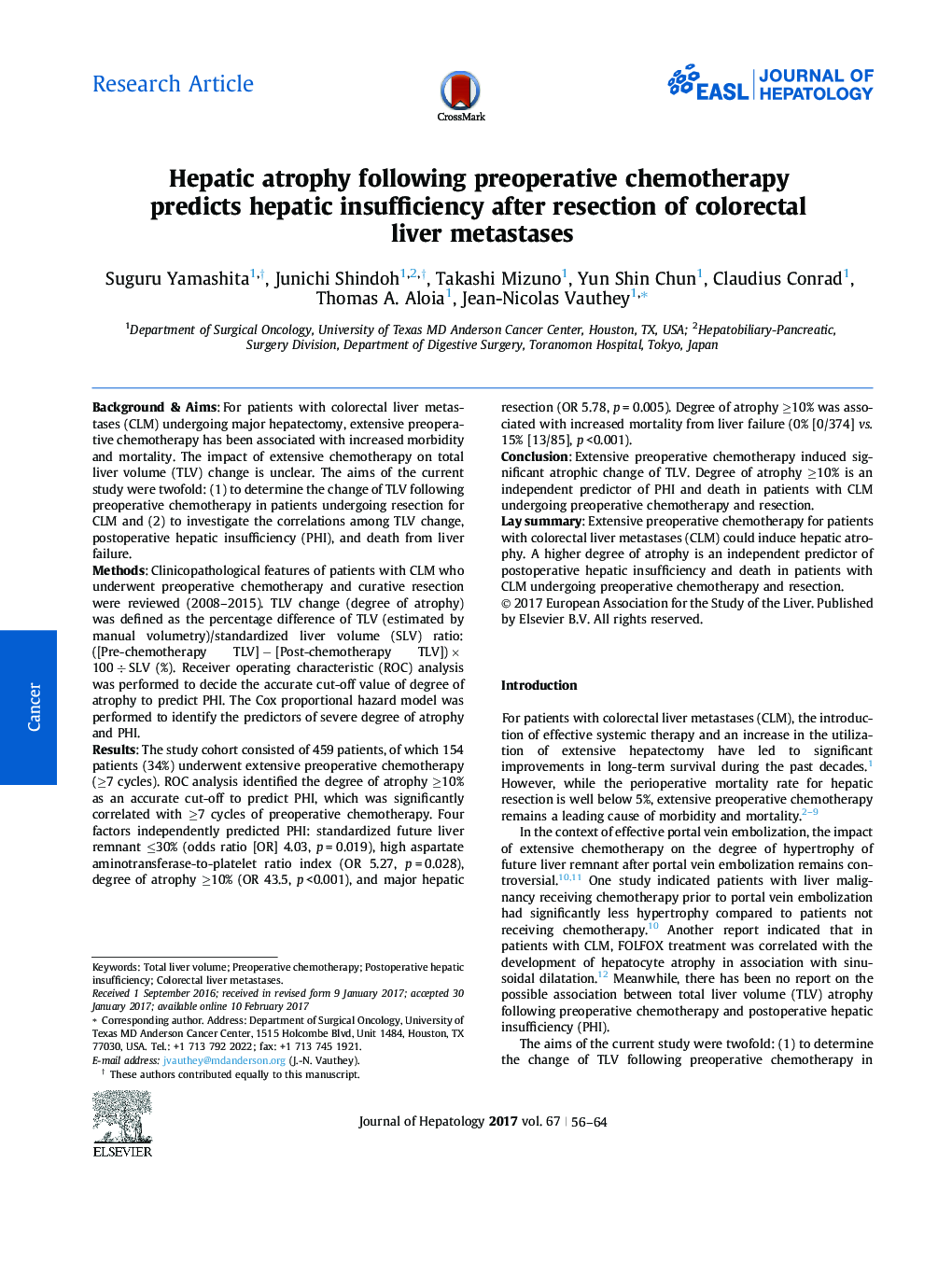| کد مقاله | کد نشریه | سال انتشار | مقاله انگلیسی | نسخه تمام متن |
|---|---|---|---|---|
| 5660708 | 1407496 | 2017 | 9 صفحه PDF | دانلود رایگان |
Background & AimsFor patients with colorectal liver metastases (CLM) undergoing major hepatectomy, extensive preoperative chemotherapy has been associated with increased morbidity and mortality. The impact of extensive chemotherapy on total liver volume (TLV) change is unclear. The aims of the current study were twofold: (1) to determine the change of TLV following preoperative chemotherapy in patients undergoing resection for CLM and (2) to investigate the correlations among TLV change, postoperative hepatic insufficiency (PHI), and death from liver failure.MethodsClinicopathological features of patients with CLM who underwent preoperative chemotherapy and curative resection were reviewed (2008-2015). TLV change (degree of atrophy) was defined as the percentage difference of TLV (estimated by manual volumetry)/standardized liver volume (SLV) ratio: ([Pre-chemotherapy TLV] â [Post-chemotherapy TLV]) Ã 100 ÷ SLV (%). Receiver operating characteristic (ROC) analysis was performed to decide the accurate cut-off value of degree of atrophy to predict PHI. The Cox proportional hazard model was performed to identify the predictors of severe degree of atrophy and PHI.ResultsThe study cohort consisted of 459 patients, of which 154 patients (34%) underwent extensive preoperative chemotherapy (â¥7 cycles). ROC analysis identified the degree of atrophy â¥10% as an accurate cut-off to predict PHI, which was significantly correlated with â¥7 cycles of preoperative chemotherapy. Four factors independently predicted PHI: standardized future liver remnant â¤30% (odds ratio [OR] 4.03, p = 0.019), high aspartate aminotransferase-to-platelet ratio index (OR 5.27, p = 0.028), degree of atrophy â¥10% (OR 43.5, p <0.001), and major hepatic resection (OR 5.78, p = 0.005). Degree of atrophy â¥10% was associated with increased mortality from liver failure (0% [0/374] vs. 15% [13/85], p <0.001).ConclusionExtensive preoperative chemotherapy induced significant atrophic change of TLV. Degree of atrophy â¥10% is an independent predictor of PHI and death in patients with CLM undergoing preoperative chemotherapy and resection.Lay summaryExtensive preoperative chemotherapy for patients with colorectal liver metastases (CLM) could induce hepatic atrophy. A higher degree of atrophy is an independent predictor of postoperative hepatic insufficiency and death in patients with CLM undergoing preoperative chemotherapy and resection.
173
Journal: Journal of Hepatology - Volume 67, Issue 1, July 2017, Pages 56-64
